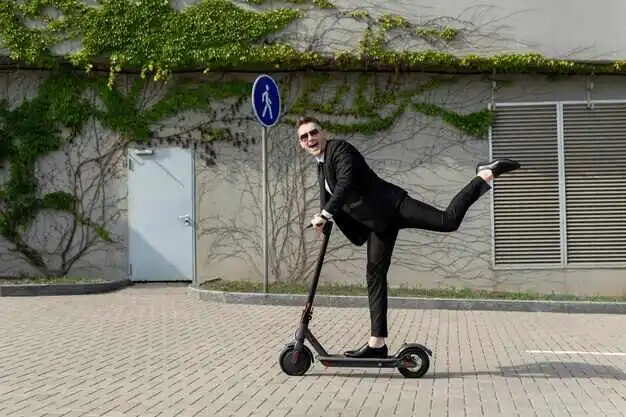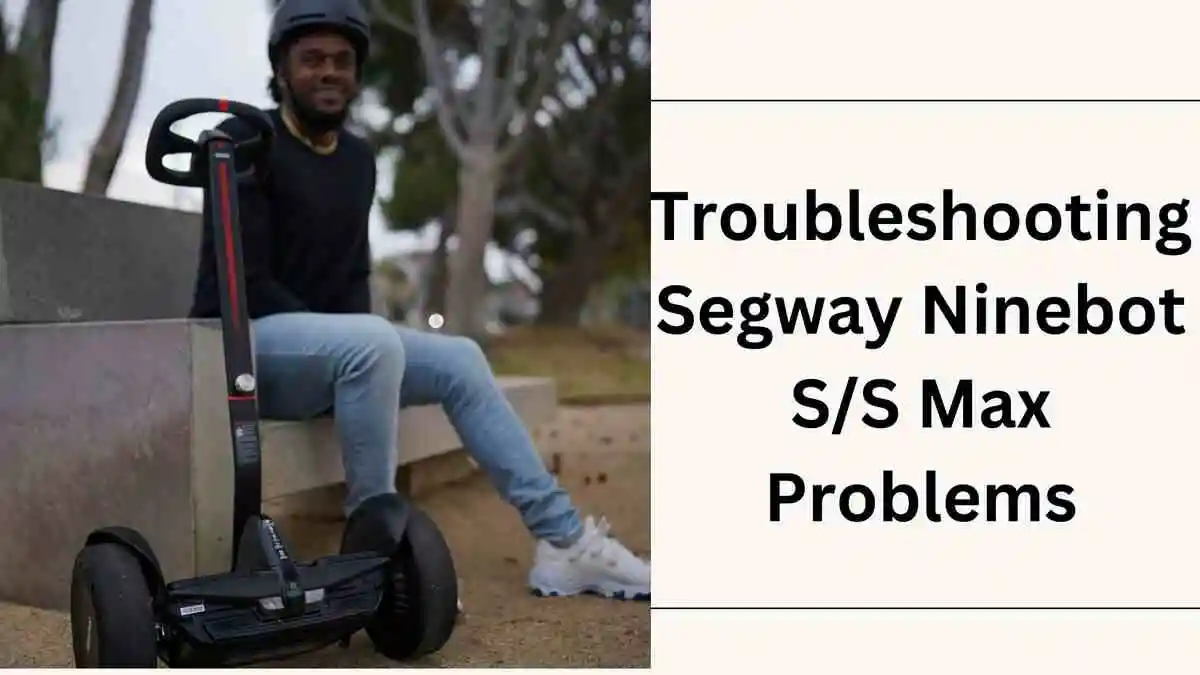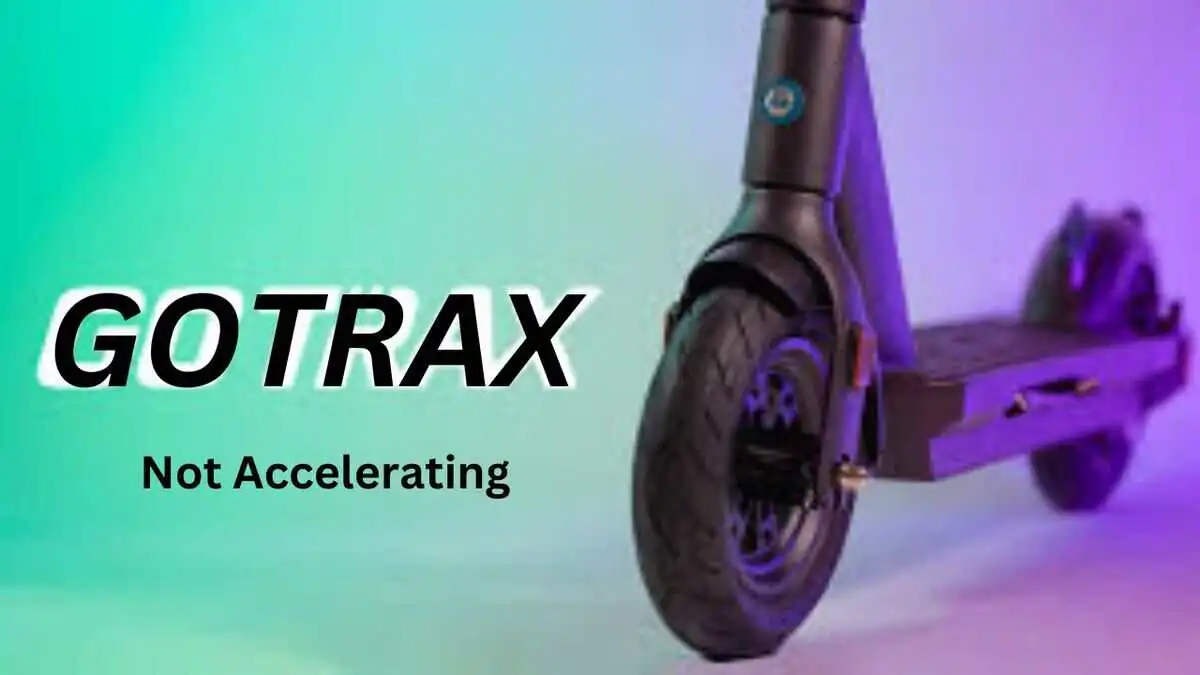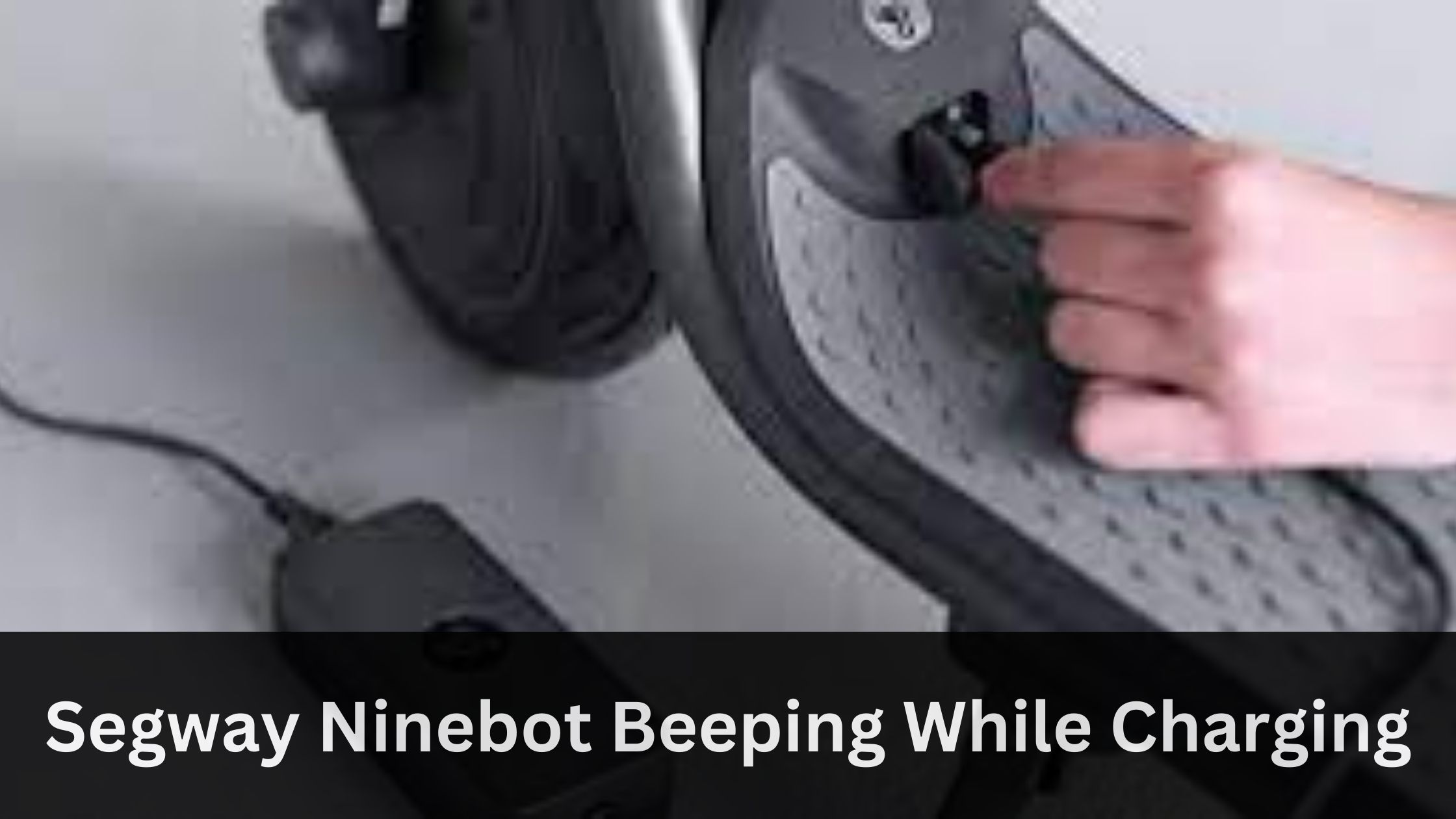Whether you’re contending with a dim front headlight, missing audio alerts, or encountering visibility problems on the display during nighttime rides, we’ve got you covered. In this article , we will explore common electric scooter problems and offer electric scooter troubleshooting steps.
This guide will show you electric scooter faults and provide you with scooter troubleshooting common issues.
First Things To Know:
Early Concern: If you’ve recently acquired a electric scooter and facing any manufacturer-related issues, it’s recommended to request a refund or replacement by contacting your seller. In cases where the refund date has passed, consider initiating a warranty claim.
Later Stage Consideration: If your electric scooter has been priced between $400 to $800, in this case the average lifespan of electric scooter is 20 months (in some cases depending on the parts it reduces to 19 months). In such a scenario, opting for the warranty will lead to a one-month repair period, extending your scooter’s functionality for at least an additional 2 more months, closer to warranty ending date. This is how the tech devices being built to keep the companies running.
Therefore, if you’ve been utilizing your scooter for 18 to 20 months, it is suitable time to explore a new budget-friendly electric scooter. Whether you’re interested in a lightweight e-scooter or one with larger wheels, it’s worth considering an upgrade if the aforementioned solutions don’t address your concerns.
Note: There is also a new problem that users face is related to storing electric scooter in apartment, so if you are interested you can give a read to methods for storing electric scooter in apartment. However there are also electric scooter issues in cities.
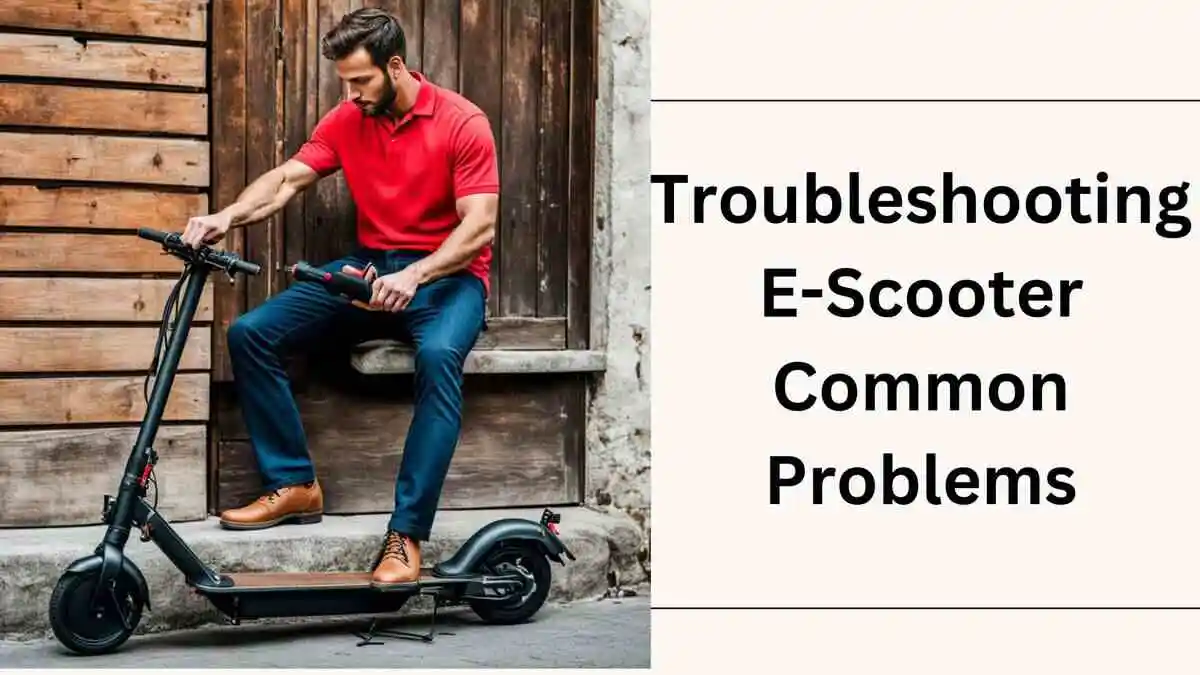
Electric Scooter Troubleshooting (25 Problems)
1: Dim Front Headlight:
The front headlight on your electric scooter is not as bright as it should be, affecting visibility during nighttime rides. The cause for this is dim headlight may be due to a loose connection or a faulty bulb.
To fix this you can try following things:
- Check the headlight connection to ensure it is securely plugged in.
- If the connection is secure, replace the headlight bulb with a new one matching the scooter’s specifications.
2: Lack of Audio Alert:
Your electric scooter is not producing audio alerts for important notifications or warnings. Cause: Lack of audio alerts may be due to a malfunctioning speaker or audio system.
Troubleshooting Steps:
- Check the speaker connection and ensure it is properly connected to the scooter’s control system.
- If the connection is fine, consider replacing the speaker with a compatible one.
You can also read a detailed article, if your electric scoter is beeping.
3: Difficulty in Seeing the Display at Night:
The scooter’s display is challenging to read in low-light conditions, making it inconvenient for nighttime rides. Cause: Poor display visibility at night may result from insufficient backlighting or screen settings.
Troubleshooting Steps:
- Check the display settings to ensure brightness and contrast are adjusted for nighttime use.
- If the issue persists, consider adding external lighting for enhanced display visibility or consult the user manual for specific adjustments.
4: Inconsistent Speed or Acceleration:
Your electric Scooter exhibits variations in speed and acceleration, impacting your riding experience. Cause: Inconsistent speed or acceleration can be attributed to issues with the throttle, controller, or battery performance.
Note: The speed of electric scooter also depends on terrain, so be careful to choose electric scooter that are compatible for hills.
Troubleshooting Steps:
You can also see the below mentioned steps to fix this however for a detailed fix read a related article on electric scooter speed fix.
- Inspect the throttle mechanism for smooth functioning without obstructions or damage.
- Examine the controller and connections for loose wires or signs of damage; replace or repair as necessary.
- If the problem persists, check the battery’s charge level and health; a weak or deteriorating battery may lead to inconsistent performance.
5: Braking System Malfunction:
The braking system on your electric scooter is not performing as expected, potentially compromising your safety. Cause: Brake issues may be due to worn brake pads, loose cables, or sensor problems.
Troubleshooting Steps:
- Check the brake pads for wear and tear, and replace them if significantly worn down.
- Inspect the brake cables and connections to ensure they are properly tightened and in good condition.
- If the problem persists, examine the brake sensors and make necessary adjustments or replacements.
6: Sudden Loss of Power:
Your Apollo electric scooter experiences a sudden loss of power, causing it to slow down or stop abruptly. Cause: Sudden power loss can result from various issues, including battery depletion, loose connections, or controller problems.
Sometimes electric scooter refuse to turn on in this case it is recommended to read a related article on scooter not turning on. Sometimes electric scooter stops during ride in this case read on how to fix electric scooter turning off while riding.
Troubleshooting Steps:
- Check the scooter’s battery level and recharge if depleted.
- Inspect all electrical connections and secure any loose or disconnected wires.
- If the issue persists, examine the controller and wiring for potential faults and address them accordingly.
7: Unresponsive Controls:
The controls on your electric scooter, such as the throttle or brake, become unresponsive or intermittently fail to function. Cause: Control issues may be caused by damaged control components, loose connections, or controller malfunctions.
Troubleshooting Steps:
- Inspect the throttle and brake components for physical damage and replace them if needed.
- Check all control connections and ensure they are secure and undamaged.
- If control problems persist, investigate the controller unit for any signs of malfunction and address it accordingly.
8: Noisy or Grinding Wheels:
Your electric scooter wheels produce unusual noises, such as grinding or squeaking, while in motion. Cause: Noisy wheels can be due to various factors, including worn bearings, loose components, or debris trapped in the wheel assembly.
Troubleshooting Steps:
- Examine the wheel bearings for signs of wear and replace them if necessary.
- Check for loose bolts, nuts, or other components in the wheel assembly and tighten them securely.
- Inspect the wheels for any foreign objects or debris, and remove them to eliminate noise.
9: Uneven Tire Wear:
Your electric scooter tires wear unevenly, leading to reduced stability and handling. Cause: Uneven tire wear may be caused by factors such as improper inflation, misalignment, or overloading.
Troubleshooting Steps:
- Ensure that the scooter’s tires are properly inflated to the recommended pressure levels.
- Check for any misalignment in the scooter’s wheels and adjust as needed to ensure even tire wear.
- Avoid overloading the scooter beyond its specified weight capacity to prevent uneven tire wear in the future.
10: Flickering Lights:
The lights on your electric scooter flicker or flash unexpectedly, affecting visibility and safety. Cause: Flickering lights may be caused by electrical issues, loose connections, or problems with the scooter’s lighting system.
Troubleshooting Steps:
- Inspect all electrical connections related to the lights, including wires and connectors, and secure any loose or damaged parts.
- Check the condition of the scooter’s lighting components and replace any malfunctioning parts if necessary.
- If the issue persists, consult a professional technician to diagnose and address electrical problems affecting the lights.
11: Wobbly Handlebars:
The handlebars on your electric scooter feel wobbly or loose, affecting your control and stability during rides. Cause: Wobbly handlebars can result from loose stem bolts or a damaged handlebar assembly.
Troubleshooting Steps:
- Tighten the stem bolts securely to eliminate wobbling in the handlebars.
- If the issue persists, inspect the handlebar assembly for damage and replace any affected parts as needed.
If you are facing issue with adjusting electric scooter handlebars to perfect height then it is recommended to read our article on adjusting handlebars height for electric scooter.
12: Battery Not Holding Charge:
The battery of your electric scooter does not hold its charge as expected, resulting in shorter ride times. Cause: Battery issues may arise from overcharging, prolonged disuse, or a deteriorating battery capacity.
You can also read about charging electric scooter battery without charger.
Troubleshooting Steps:
- Avoid overcharging the battery; unplug it once fully charged to prevent damage.
- If the scooter has not been used for an extended period, charge and discharge the battery a few times to revive its capacity.
- If the problem persists, consider replacing the battery with a new one compatible with your scooter model.
13: Loose Kickstand:
The kickstand on your electric scooter is loose or does not securely support the scooter when parked. Cause: A loose kickstand can result from loose mounting hardware or wear and tear of the kickstand itself.
Troubleshooting Step-by-Step:
- Tighten all kickstand mounting hardware to ensure a secure fit to the scooter frame.
- If the kickstand is damaged or worn, consider replacing it with a compatible kickstand for your scooter model.
14: Uneven Ride on Rough Terrain:
When riding your electric scooter on rough terrain, you experience a bumpy and uncomfortable ride. Cause: Uneven rides on rough terrain may be due to inadequate suspension settings or improper tire pressure.
Troubleshooting Step-by-Step:
- Adjust the suspension settings on your scooter to match the terrain you are riding on, providing better shock absorption.
- Ensure that the tire pressure is appropriate for the terrain, as lower pressure may offer better shock absorption on rough surfaces.
15: Handlebar Grips Worn or Torn:
The handlebar grips on your electric scooter have become worn or torn, reducing comfort and grip during rides. Cause: Handlebar grips may wear out over time due to prolonged use, exposure to the elements, or friction.
Troubleshooting Step-by-Step:
- Replace the worn or torn handlebar grips with new ones designed for your scooter model, ensuring a comfortable and secure grip during rides.
16: Loose or Noisy Fenders:
The fenders on your electric scooter are loose or create noise while riding, which can be both annoying and affect the scooter’s aesthetics. Cause: Loose or noisy fenders may be due to loose fasteners, worn-out fender components, or debris caught in the fender area.
Troubleshooting Step-by-Step:
- Tighten all fasteners and bolts securing the fenders to ensure they are securely in place.
- Inspect the fender components for wear or damage, replacing them if necessary to eliminate noise and vibration.
- Check for any debris or foreign objects trapped in the fender area and remove them to resolve the issue.
17: Squeaky Suspension:
The scooter’s suspension system on your electric scooter produces squeaking or creaking noises while in use. Cause: Squeaky suspension can be caused by dry or damaged suspension components, lack of lubrication, or excessive dirt buildup.
Troubleshooting Step-by-Step:
- Apply appropriate lubrication to the suspension components as recommended in the user manual to eliminate squeaking noises.
- Inspect the suspension parts for wear or damage, and replace any components if needed to resolve the issue.
- Regularly clean the suspension system to prevent dirt and debris from accumulating and causing noise.
18: Handlebar Misalignment:
The handlebars on your electric scooter are misaligned, making steering and control less precise. Cause: Handlebar misalignment may occur due to a collision, an accident, or a loose handlebar clamp.
Troubleshooting Step-by-Step:
- If the scooter has been involved in an accident, inspect the handlebars for any visible damage and replace them if necessary.
- Ensure that the handlebar clamp is securely fastened and that the handlebars are correctly aligned with the scooter’s front wheel.
19: Inaccurate Speedometer Readings:
The speedometer on your electric scooter provides inaccurate speed readings, making it difficult to monitor your riding speed. Cause: Inaccurate speedometer readings may result from sensor issues, misalignment, or electronic malfunctions.
Troubleshooting Step-by-Step:
- Inspect the speed sensor for damage or misalignment and adjust or replace it if necessary to ensure accurate readings.
- Check the wiring and connections related to the speedometer for any loose or damaged components, and address them as needed.
- If the problem persists, consult the scooter’s user manual or a professional technician for further diagnosis and repair.
20: Loose Deck or Footboard:
The deck or footboard on your electric scooter is loose, creating instability and discomfort during rides. Cause: A loose deck or footboard can be attributed to loose deck bolts, damaged mounting brackets, or wear and tear.
Troubleshooting Step-by-Step:
- Tighten all deck bolts and fasteners to ensure a secure connection between the deck and the scooter’s frame.
- Inspect the mounting brackets for damage and replace them if needed to eliminate instability.
- If the problem persists, consider replacing the deck with a new one designed for your scooter model.
21: Flickering Electric Display:
The electric display on your electric scooter flickers or experiences intermittent screen glitches, making it challenging to read important information. Cause: Flickering display issues can be caused by loose display connections, electrical interference, or display component problems.
You can see these fixes and also read our detailed article on electric scooter display fix.
Troubleshooting Step-by-Step:
- Check all display connections for secure attachments and tighten them if necessary.
- Ensure that there are no electronic devices or sources of interference nearby that may affect the display’s performance.
- If the issue persists, inspect the display components and wiring for damage or malfunction, and replace them as needed.
22: Inconsistent Brake Response:
The brakes on your electric scooter exhibit inconsistent response, leading to braking difficulties and safety concerns. Cause: Inconsistent brake response can be caused by issues with brake pads, loose cables, or braking system malfunctions.
Troubleshooting Step-by-Step:
- Inspect the brake pads for wear and tear and replace them if they are significantly worn down.
- Check the brake cables and connections for any loose or damaged parts, and secure or replace them as necessary.
- If the problem persists, investigate the braking system for malfunctions and address them accordingly.
23: Unusual Motor Noises:
The motor on your electric scooter produces unusual or grinding noises, affecting the ride experience and potentially indicating motor issues. Cause: Unusual motor noises may be attributed to worn motor components, loose motor mounts, or electrical problems within the motor system.
Troubleshooting Step-by-Step:
- Examine the motor components for signs of wear or damage, and replace any affected parts if necessary.
- Check the motor mounts for secure attachments, and tighten them if they are loose.
- If the issue persists, consult a professional technician to diagnose and address any electrical problems within the motor system.
24: Intermittent Power Loss:
Your electric scooter experiences intermittent power loss, causing the scooter to suddenly slow down or stop during rides. Cause: Intermittent power loss can result from loose electrical connections, damaged wiring, or a malfunctioning battery.
Troubleshooting Step-by-Step:
- Inspect all electrical connections for secure attachments and tighten them as necessary.
- Check the wiring for any signs of damage, and replace or repair any affected wires or components.
- If the issue persists, assess the battery’s condition and charge level, and consider replacing it with a new one if needed.
25: Handlebar Grip Slippage:
The handlebar grips on your electric scooter tend to slip or rotate during rides, causing discomfort and affecting control. Cause: Handlebar grip slippage can occur due to worn or improperly installed grips and handlebars.
Troubleshooting Step-by-Step:
- Replace the handlebar grips with new ones designed for your scooter model and ensure they are properly installed and secured in place.
- Check the handlebar alignment and tighten the grip components to prevent rotation or slippage during rides.
Conclusion:
In conclusion, troubleshooting common issues with electric scooters is essential for maintaining optimal performance. Addressing problems such as dim headlights, audio alerts, and display visibility not only ensures a smoother riding experience but also prolongs the scooter’s overall lifespan.
Regular maintenance, adherence to troubleshooting steps, and timely replacements contribute to a safer and more enjoyable electric scooter journey. Additionally, for prolonged usage, users may consider exploring new models with advanced features to meet evolving needs and preferences. Overall, troubleshooting is a key aspect of maximizing the longevity and efficiency of electric scooters.

